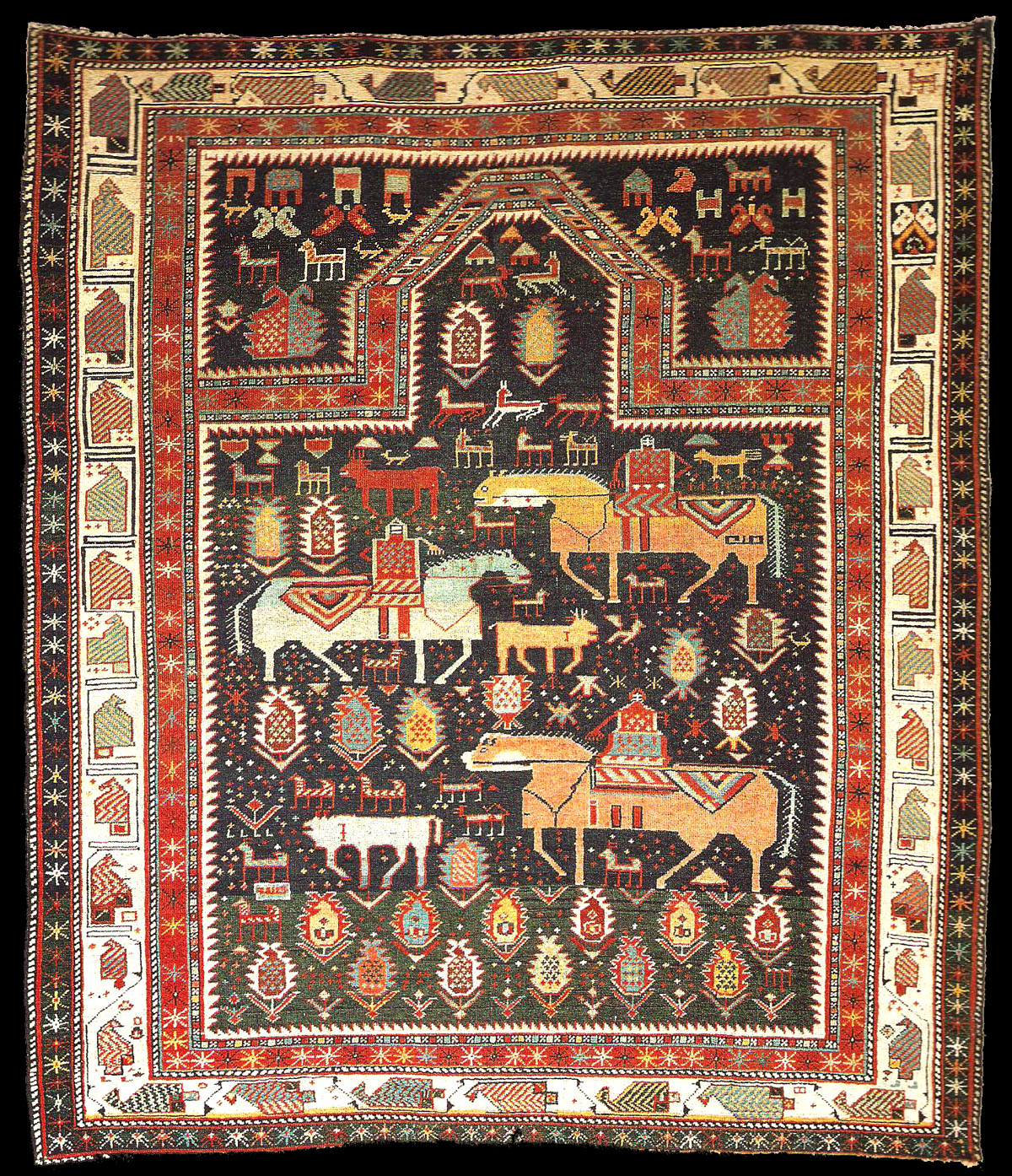|
The main focus of this striking rug is the three figures of elaborately
attired warriors astride large horses, which are equally elegantly
decorated. The rug also features a profusion of animals, deer and a few
birds both above and below the prayer arch. This appears to be a unique
design for a Marasali prayer rug, with no known analogies in rug literature
except for a vaguely related example with a large horse and rider as a
centrepiece (Robert Muller's rug, published Hali magazie 5/4, p.27). It is quite possibly a commissioned piece, made for a family of
hunters or warriors. Particular attention has been paid to details such as
the riders' costumes and saddle covers. Special batches of dyes must have
been made for the pale sky blue and golden yellow ochre of the horses, which
are unusual colours for a Marasali.
Prayer rugs containing fabulous birds see for example Volkmann, Old Eastern
Carpets, plate 66 and lions have been attributed to Marasali. Other prayer
examples with birds are assigned to Akstafa. The Volkmann rug has a system
of major and minor borders virtually identical to this piece. Volkmann
suggests that the deer-tike animals that also feature on his rug symbolize
the Caucasian countryside. There are related secular Shirvan examples with
naturalistic horses alternating with roosters.
 |

